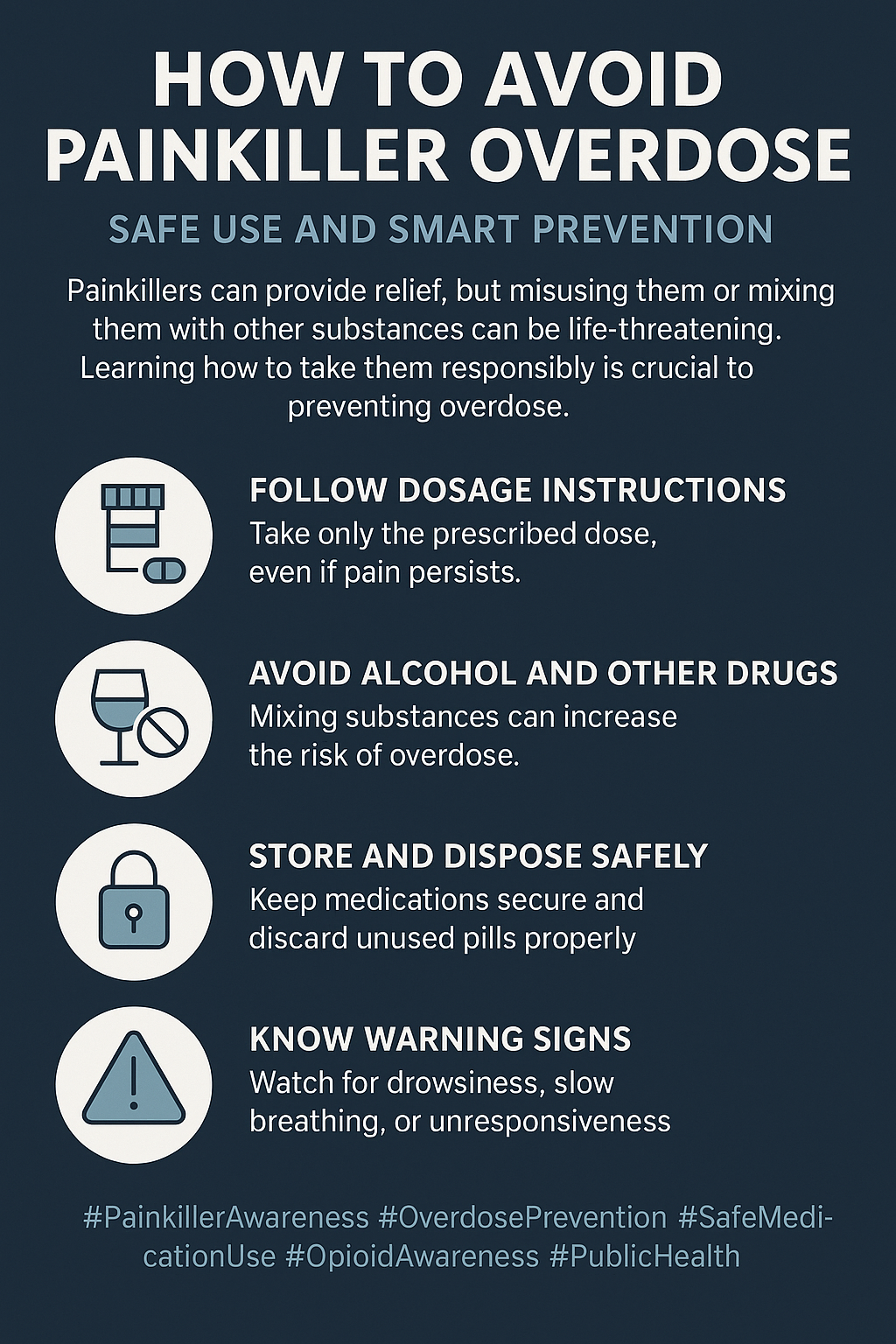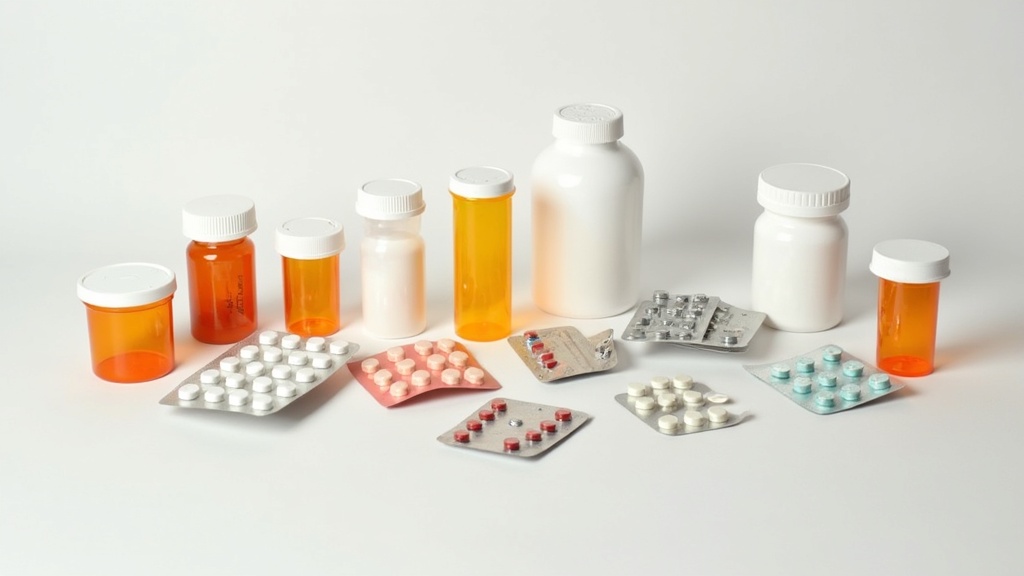Managing pain with medication is really common, but it’s surprisingly easy to go overboard without realizing it. The risks of overdosing on painkillers are serious, and knowing how to stay safe is super important for anyone who’s ever needed to take them. Whether you’re handling everyday aches or recovering from surgery, a bit of know-how can go a long way in keeping you out of trouble. I’m sharing my insights and practical advice on steering clear of accidental painkiller overdose—something that’s way more common than you might expect.
Why Painkiller Overdose Happens More Than You Think
Painkillers come in all sorts of shapes and sizes: over-the-counter stuff like ibuprofen, prescription opioids, and even combo meds that sneak painkillers into flu or headache remedies. What catches a lot of people off guard is how easy it is to double up on doses or accidentally mix medications. I’ve seen friends grab a cold medicine for a headache, not realizing it already contains acetaminophen, then chase it with an extra dose for good measure. Such mix-ups occur every day.
Opioid overdoses get a lot of attention, and for good reason. They’re responsible for the majority of painkiller-related emergency visits and deaths. But even common painkillers like acetaminophen can be dangerous if you take more than the safe limit. According to the Centers for Disease Control and Prevention (CDC), tens of thousands of Americans end up in the ER each year because of painkiller misuse, and a bunch of those cases are accidental. Knowing what leads to overdose helps you make more intelligent choices with your own meds.
The Basics: How Painkillers Affect Your Body
Painkillers work in several ways. There are a few big groups:
- Nonopioid Analgesics: Includes acetaminophen (Tylenol) and NSAIDs (like ibuprofen, aspirin, naproxen). They address pain and, sometimes, inflammation as well.
- Opioids: Includes codeine, hydrocodone, morphine, oxycodone, and fentanyl. These are pretty strong and are usually prescription-only.
- Combination Medications: These often blend multiple painkillers or mix them with caffeine, antihistamines, or other ingredients.
Each of these meds has a limit your body can safely handle. For example, taking more than 4,000 mg of acetaminophen (that’s the best-known ingredient in Tylenol) in 24 hours can harm your liver. Opioids, on the other hand, slow your breathing, and too much can stop it altogether. Knowing these basics makes it much easier to spot when you might be pushing the boundaries.
Practical Steps to Prevent Overdose
Avoiding accidental overdose isn’t about memorizing chemistry or turning your house into a pharmacy. Making small, thoughtful changes, such as checking labels or setting reminders, goes a long way. Here’s what I find most helpful:
- Read the Label Every Time: Even if you think you know your medicine, double-check the dosing instructions and the active ingredients to ensure accuracy. Medications change, brands swap out formulas, and it’s easy to lose track of them.
- Avoid Mixing Medications: Many cold or allergy medicines contain painkillers. If you add another painkiller to the mix, you could be doubling your dose without realizing it. It’s worth asking your pharmacist for help if you’re unsure.
- Keep a Medication Log: I use the notes app on my phone to jot down what I take and when I take it. Super handy if you’re caring for kids or elderly relatives, too.
- Use a Pill Organizer: These small containers help organize your medications for each day. They’re a lifesaver for anyone who’s forgetful or on a bunch of meds at once.
- Start Low, Go Slow: If you’re prescribed a new medication, take the lowest effective dose. If it’s not working, check in with your doctor before upping the amount.
- Don’t Share or Use Leftovers: Painkillers prescribed for other people may be unsafe for you, especially if you have different medical conditions or are on other meds.
Situations Where You Need to Be Extra Careful
Some moments in life call for extra care:
- Multiple Prescribers: If you see more than one healthcare provider, ensure that everyone is aware of your current medications. Communication gaps are a significant source of accidental overdose.
- Overlapping Symptoms: Taking different meds for pain, sleep, cough, or anxiety at the same time can get dangerous if any of them contain similar ingredients.
- Mixing with Alcohol: Alcohol can ramp up the sedative effects of painkillers and increase liver strain. I always advise waiting several hours after drinking before taking any pain medicine, and some combinations are never safe.
- Caring for Vulnerable Folks: Kids, older adults, and people with liver or kidney problems are at much higher risk. Even minor miscalculations or mix-ups matter more to them.
Be Aware of Medication Swaps
Sometimes, medicines switch to generics or to a different but similar-sounding drug. It’s easy to mix up two bottles, especially if you’re not familiar with all the medical terminology. I once almost took muscle relaxers instead of ibuprofen because the bottles looked alike and were stored together. Avoid this by storing medicines separately and clearly labeling them.
The Role of Your Doctor and Pharmacist
Your doctor isn’t just there to write the prescription. They’re also your best source for advice on dosage and side effects. Don’t be afraid to ask for clarification about:
- How long to take a painkiller
- Which side effects are worth worrying about
- What to do if your pain isn’t getting better
Pharmacists are a goldmine for quick guidance. Whenever I pick up a new medication, I run my list of drugs by the pharmacist to double-check that there aren’t any sneaky interactions or overlapping ingredients. They can spot things you might miss and recommend safer alternatives.
Common Hurdles and How to Handle Them
- Forgetting When You Last Took a Dose: Life gets busy. Use alarms or reminders on your phone to prevent duplication.
- Taking Several Remedies at Once: It’s easy to accidentally take cold, headache, and allergy medicine all on the same day—lots of overlap here. Check ingredient lists to catch any repeats.
- Pain Not Going Away: If Your Pain Persists, Don’t Just Take More. This is the moment to speak with a healthcare professional. More medicine won’t always solve the problem, and extra doses are more likely to harm.
- Travel or Routine Changes: New schedules or time zone changes can throw off your usual routine. Keep your medication log up to date, and pack only the necessary medicines in labeled containers to prevent confusion.
Recognizing Overdose Symptoms Early
Early warning signs are extremely vital, and recognizing them can actually save lives. Here’s what to look for:
- Acetaminophen: Nausea, vomiting, sweating, confusion, pain in the upper right side of your abdomen (a sign your liver is struggling)
- Opioids: Slow or shallow breathing, pinpoint pupils, trouble waking up, blue lips or fingertips
- NSAIDs: Stomach pain, gastrointestinal bleeding (watch for black or bloody stools), ringing in the ears, unusual bruising
If you suspect someone is experiencing an overdose, call emergency services right away. Fast action can make a huge difference.
Real-World Scenarios: How Overdose Happens
I’ve met people who accidentally overdosed just by following expired instructions or misunderstanding a doctor’s orders. One friend thought OTC meds were a lot weaker than prescriptions, so he didn’t think twice about doubling up. Stories like these aren’t rare. Simple slip-ups, like taking the wrong bottle at night, forgetting a dose, and “catching up” with an extra one, or not measuring liquid medicine correctly, are all classic causes of accidental overdose.
Being honest with your healthcare providers about all the medications and supplements you’re taking—even vitamins or herbal supplements—is extremely important for avoiding interactions or accidental overdoses.
Frequently Asked Questions
Here are some common questions that pop up when people start thinking about painkillers and overdose safety:
How much painkiller is safe to take at once?
Answer: Always follow the dosing amounts specified on the package or prescription label. If you’re ever unsure, consult your doctor or pharmacist before taking more.
What should I do if I miss a dose?
Answer: Don’t double up. Wait until your next scheduled dose. If you’re concerned about your symptoms, seek reassurance and guidance from a medical professional.
Can I combine different over-the-counter painkillers?
Answer: Sometimes you can (like alternating ibuprofen with acetaminophen), but it needs to be done carefully and not more often than recommended. Check with a pharmacist first to ensure you don’t accidentally exceed the safe limit for either one.
What’s Worth Remembering?
Staying safe with painkillers is really about being mindful and paying attention to what, how much, and how often you’re taking them. Keep an eye on labels, talk to your healthcare providers, and never hesitate to ask questions. These little habits can help you manage pain while staying far from the risks of accidental overdose. Utilize the tools and resources available to you; they can make a significant difference in protecting your health.
Important Additional Tip: If you are ever prescribed a new medication or over-the-counter treatment, make it a habit to read any included leaflets and consider saving an online version for future reference. Sometimes, information changes or new drug interactions are added, so it’s a good habit to check for updates regularly. Also, don’t hesitate to reach out and ask any questions if something about your medication routine feels off or confusing. Taking this extra step helps keep things clear and reduces mistakes in the long run.
Video: 5 DEADLY Mistakes to Avoid When Taking Painkillers

